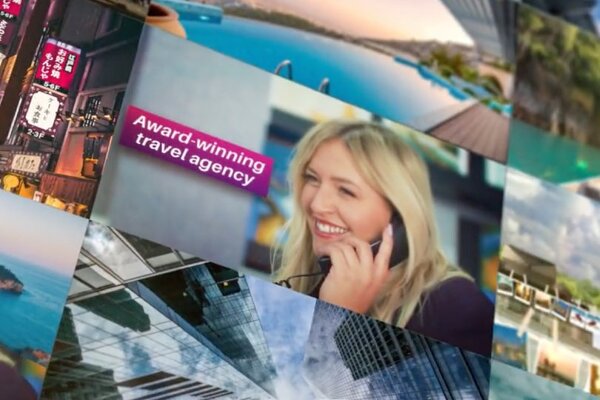How to segment your database in time for the travel upturn
Segmenting your database now could help you prepare for the recovery of the market post-Covid-19, advises TTNG’s marketing manager Ross East
Since the beginning of the Covid-19 pandemic, the main focus for travel businesses has been on conversations with customers and making sure that the businesses’ needs are being met from an operational standpoint.
Although there are tough times still to come, there are glimmers of hope with a trickle of 2021 bookings coming in, which has driven the marketing conversation back into travel agents’ minds.
To prepare for the recovery of the travel market, segmenting your database and target audiences can really help support your future marketing activities and communications.
At The Travel Network Group we have found that our members who segment, even on the most basic level, get the best ROI with their marketing.
Data segmentation: explained
Data segmentation is when you separate your audience or database into smaller sections based on criteria such as demographics, spend value and geographic location.
Here are some of the benefits of having a segmented database:
- Reaching the right customer with the right information or offers
- Increased engagement and response when advertising
- Improved customer retention
- Improved return on investment (ROI)
If you are thinking about segmenting your current audience for the first time, think about what your customers book (for example cruise, tours, beach holidays, luxury) as well as the value of booking. Once you have these segments in place, you can then delve deeper and even start customer profiling.
Here are some examples of audience segmentation.
Age
Age is a perfect example of segmentation as people in different stages of life pursue different holidays. Here is a top-level example:
- 18-29: young professionals
- 30-44: married professionals
- 45-64: empty nesters
- 65+: retirees
There are many other segments inside those age brackets but even by using the above, it will give you a focus on the way you communicate and what you market to each segment.
For example, a retiree and a young professional may both have an interest in touring, however you know as a travel agent that there are certain types of tour (active and adventure versus walking, for example) and suppliers (G Adventures versus Cosmos, for example) that spring to mind for each segment. These examples are not a silver bullet but they will resonate with the audience much better compared to a blanket “one-size-fits-all” approach.
Spend value
Segmenting your audience by spend can be very useful if the value of the holidays you sell varies. Someone with a £500pp budget will get a different type of holiday to someone who has £1,000pp, £2,500pp and so on.
The holidays you sell will dictate the spending brackets you choose for segmentation – again, there isn’t a “one-size-fits-all” approach.
One of the benefits of this segment is that it gives you a great approach to marketing if you would like to cross sell. Someone who has booked a £2,500pp cruise with you may be interested in a £2,500pp beach holiday or tour, for example, while another customer who regularly books a family beach holiday might be interested in a cruise product in the same bracket.
Geographic location
If you only have customers local to you, segmenting by geographic location might not be needed.
But if you have a widespread customer base across the UK and even beyond, doing so can be very beneficial. If a customer lives in Belfast and keeps receive marketing featuring Stansted departures, they will most likely unsubscribe from your marketing.
By understanding where your customers are based, it will give you the best platform to deliver targeted offers from their local airports.
Booking history
By evaluating your customer booking history, you will be able to find out what type of holidays your customers are interested in, and if you are using a CRM, you will be able to tag the contacts for marketing purposes. You will then be able to target your customers with marketing activity based on what they are interested in.
This is an easy win if you are prepared to do the data analysis on previous bookings, which can take a lot of time depending on how many customers you have.
If you don’t feel you have the time to do this, try to apply this moving forward as bookings come in, as this will help massively with your marketing efforts.
When to send
The best times to send will differ from segment to segment but there are a few rules of thumb you should try to abide by:
- Leisure customers tend to open their emails in the early evening
- Emails to business customers tend to see an improved open rate between 11am and 2pm
- Monday at 9am is a no-go – most professionals have their inbox bursting to the brim at this time
I would advise you to test open rates with every segment, as the above examples use industry-wide data rather than your own specific data.
I’ve covered just a few examples of how you can segment data. Once you understand the segmentation process, you can start to create customer personas, which will help you target new audiences and grow your database.
Personas can be very useful in both digital marketing and offline marketing due to the development in new customer targeting.
Tips on communicating with customers after segmenting your data
Roy Barker, director of consumer research company SPIKE, offers the following advice
“Once you have segmented your data, you can start communicating. For clients who have booked with you the most frequently, the most recently and who have spent the most, get on the phone to them as they’re the ones that deserve your greatest attention – you’re not going to be calling someone who spent next to nothing with you five years ago.
“Then it’s a matter of working your list – and email is probably your best tool here to restart your business.
We work with Aito every year to run their annual Travel Insights research. The most recent survey generated more than 26,000 responses. One of the questions we asked is ‘What is the best way for holiday companies to keep in touch with you?’ Almost 90% of respondents said that email was their preferred mode of contact.
“So, use your downtime to segment your customer base, and then get ready to call and email customers with highly personalised communications – including recognising their past holiday behaviour – helping and reassuring them about when the time is right to start booking and travelling again.”



















